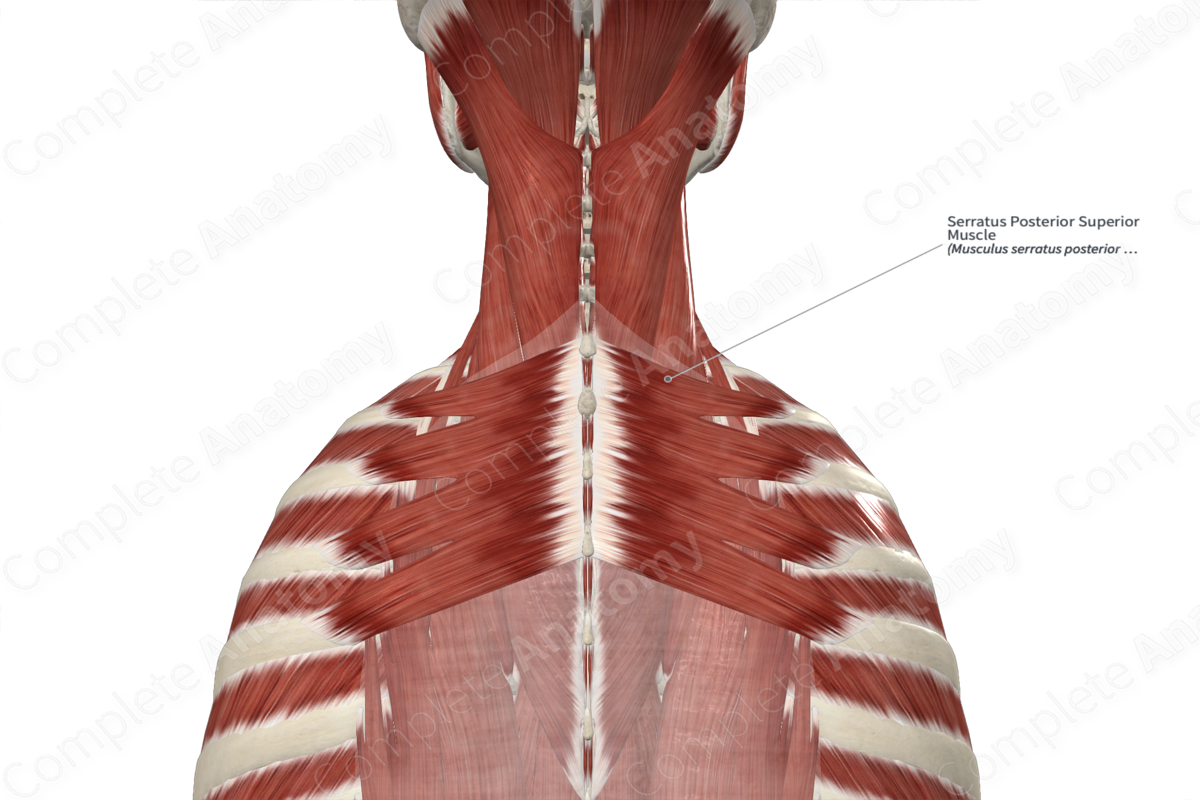
Quick Facts
Origin: Nuchal ligament; spinous processes of C7-T3 vertebrae.
Insertion: External surfaces of second to fifth ribs.
Action: Elevates ribs at their costovertebral joints.
Innervation: Anterior rami of second to fifth thoracic nerves.
Arterial Supply: Dorsal branches of upper posterior intercostal arteries.
Origin
The serratus posterior superior muscle originates from the:
- inferior end of the nuchal ligament;
- spinous processes of the seventh cervical and first to third thoracic vertebrae;
- adjacent supraspinous ligaments.
Insertion
The fibers of the serratus posterior superior muscle travel inferolaterally and insert, via four separate tendons, onto the external surfaces of the second to fifth ribs. These insertion sites are located just lateral to the angles of these ribs.
Key Features & Anatomical Relations
The serratus posterior superior muscle is an extrinsic muscle of the back and is found in the upper back region. It is a thin, broad, quadrilateral type of skeletal muscle and its digitations, found at its insertion sites, give the muscle its saw-toothed, or serrated, appearance.
It is located:
- anterior (deep) to the rhomboid major, rhomboid minor and trapezius muscles;
- posterior (superficial) to the spinotransversales and erector spinae muscles;
- medial to the levator scapulae muscle.
Actions
The serratus posterior superior muscle elevates the ribs at their costovertebral joints during forced inspiration (Sinnatamby, 2011). It may also be involved in proprioception (Moore, Dalley and Agur, 2009).
References
Moore, K. L., Dalley, A. F. and Agur, A. M. R. (2009) Clinically Oriented Anatomy. Lippincott Williams & Wilkins.
Sinnatamby, C. S. (2011) Last's Anatomy: Regional and Applied. ClinicalKey 2012: Churchill Livingstone/Elsevier.




